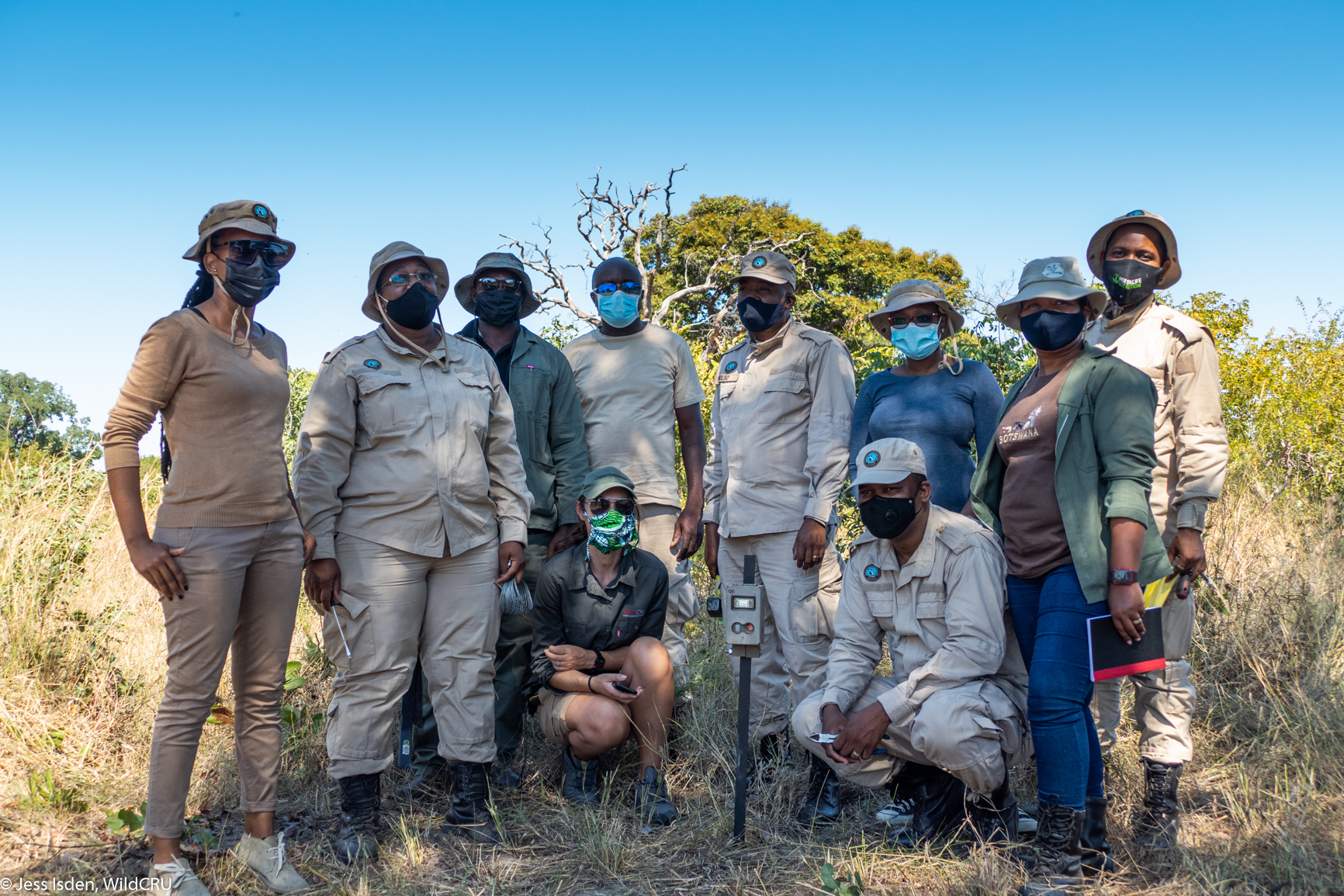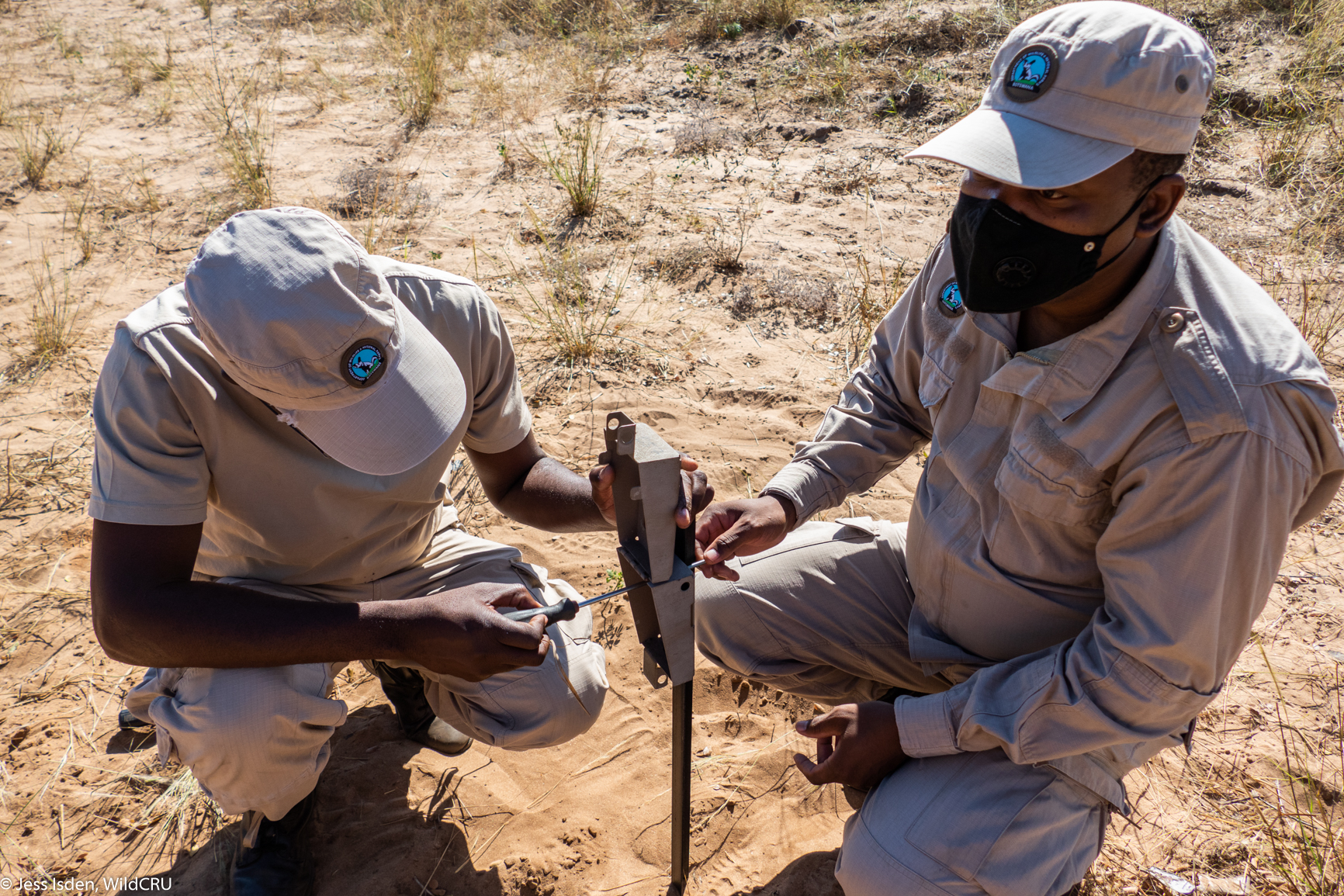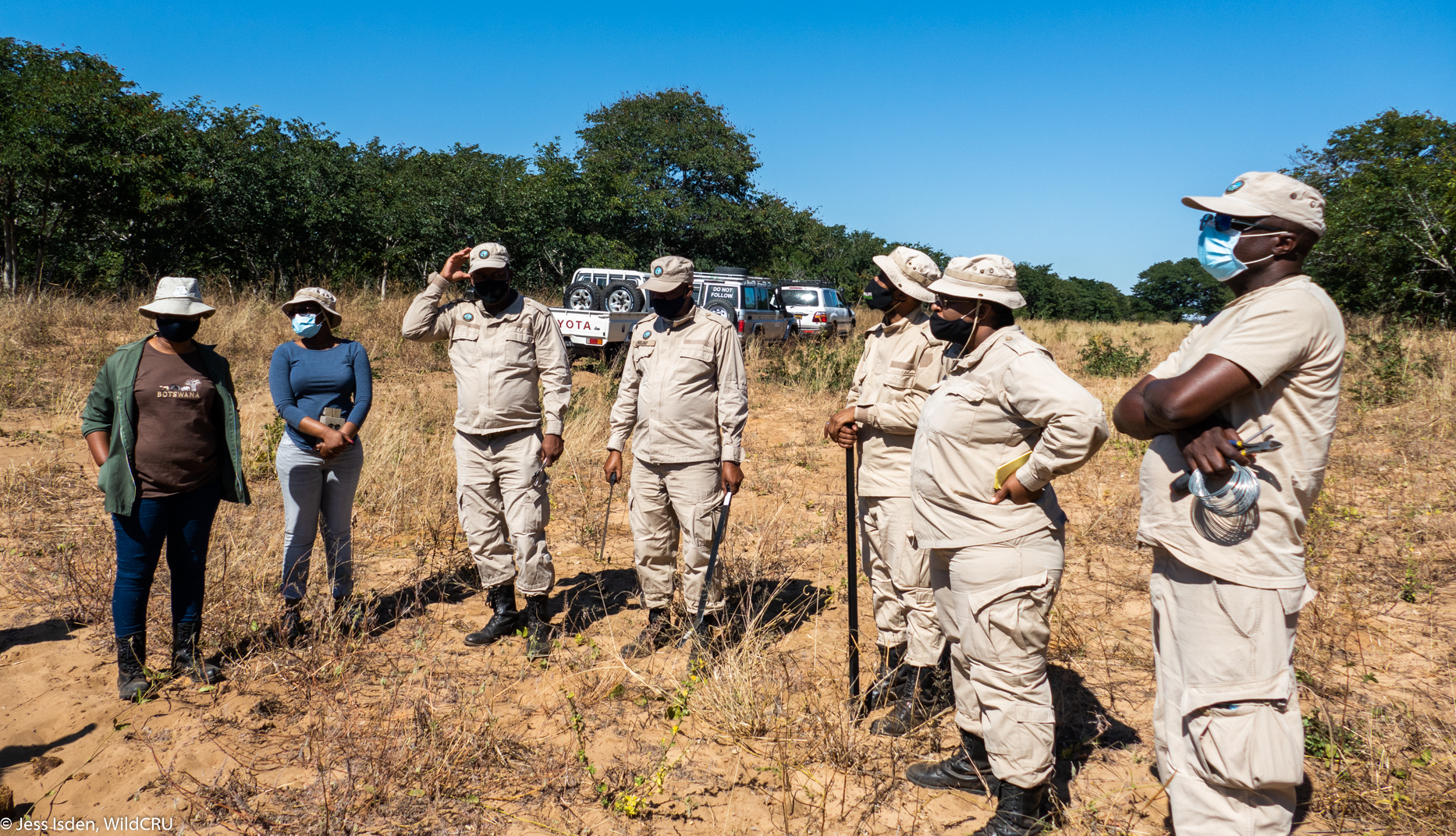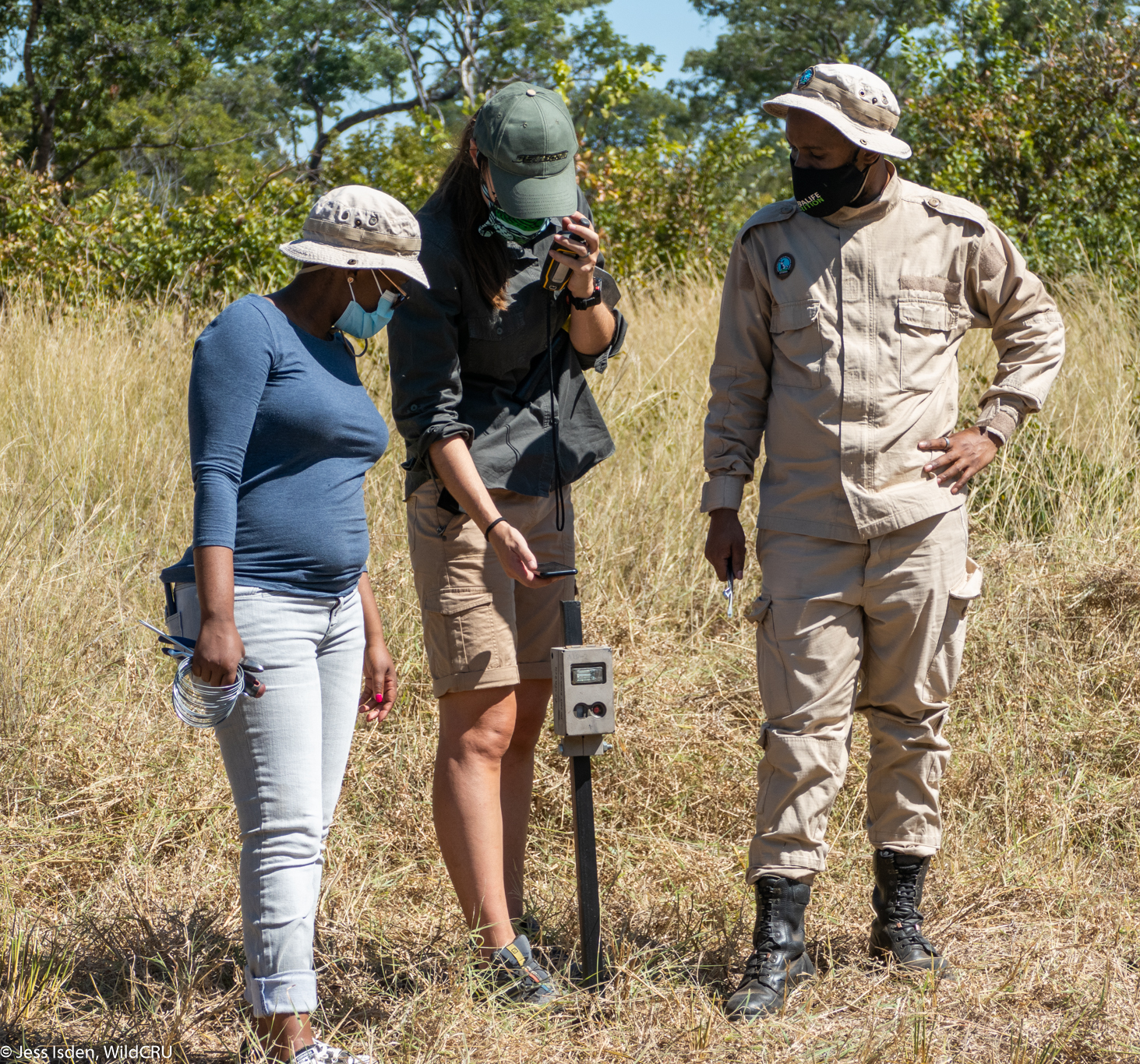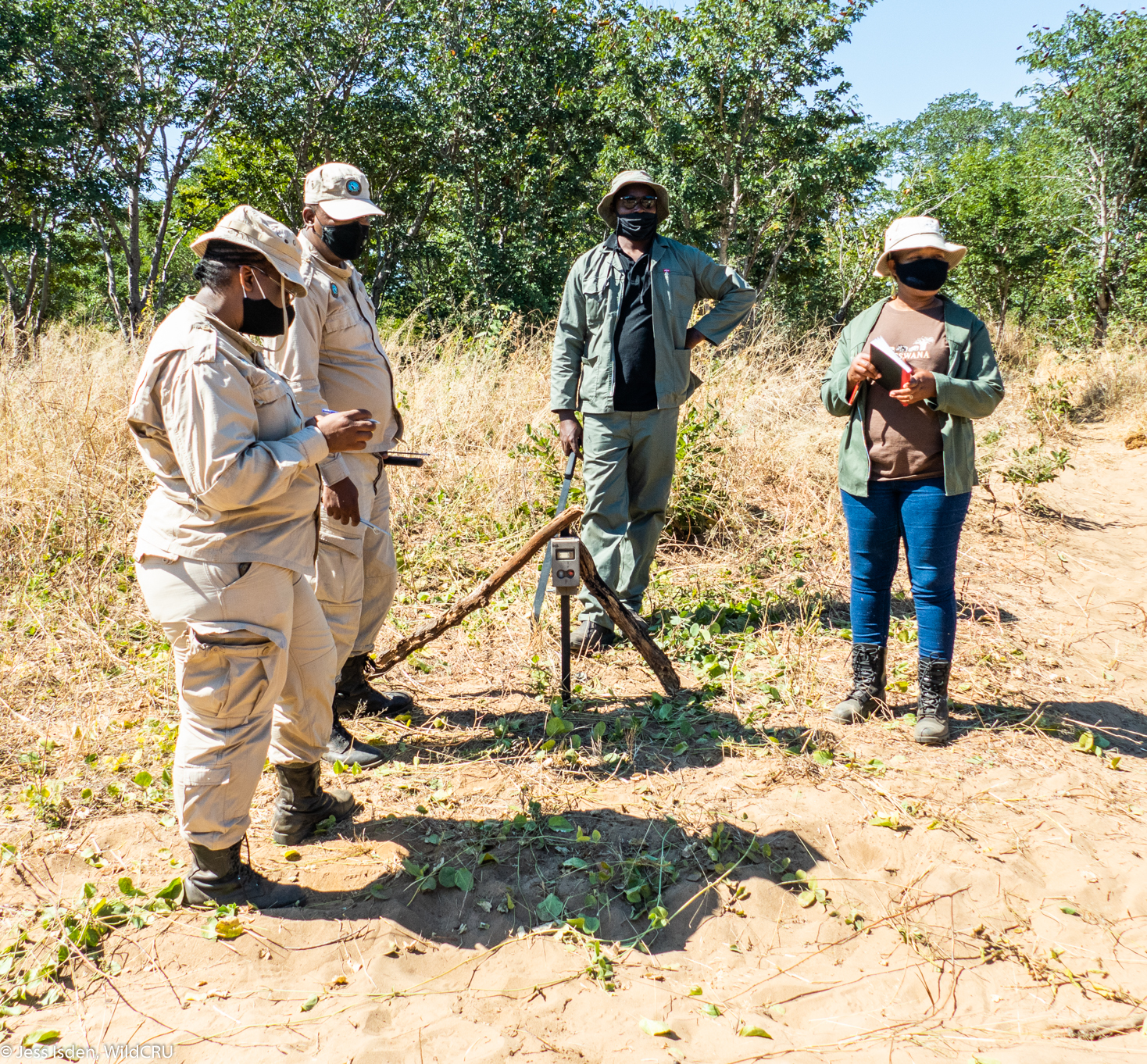News
Building capacity and partnerships for surveying large carnivores in Botswana
Large carnivores have the power to shape their surroundings – as apex predators they regulate trophic cascades and contribute to the overall health of large ecosystems, but as conflict-causing animals they can also affect considerable economic loss for local communities through livestock depredation. For these reasons, effective conservation management plans for large carnivores are often at, or very near to, the top of the priority list for government wildlife departments. A fundamental first step to developing conservation management plans for large carnivores is understanding their abundance and distribution. For a large country like Botswana, which has not only dedicated over 39% of its land use to wildlife in the form of national parks, game reserve or wildlife management areas, but also hosts wildlife in privately and communally owned concessions across the rest of the country, this can be quite a challenge.
Camera trapping, a method which uses large grids of cameras to remotely survey areas for wildlife, has become one of the most popular methods for surveying large carnivores across the world. Camera traps are non-invasive, work across a variety of habitats, can span large survey areas and can continuously collect data on shy and elusive carnivores in areas which may be difficult to access on a regular basis. Using high quality images captured during the survey, scientists can now individually identify large carnivores based on their unique markings, and apply spatially-explicit capture-mark recapture analyses to estimate densities. This method has enabled us to finally determine the numbers of large carnivores in areas which were previously too difficult or too large to survey reliably using other methods. For these reasons, the Trans-Kalahari Predator Programme (TKPP) has been conducting large-scale camera trap surveys in Botswana’s wildlife areas since 2017, and has teamed up with the Department of Wildlife and National Parks (DWNP) to build capacity within the research department and transfer knowledge on the most up-to-date methods for the planning, design, implementation and analysis of surveys using camera traps.
In May 2021, members from Botswana’s DWNP research division from districts across the country participated in an online training course provided by TKPP covering the theory behind design and setup of surveys intended to estimate densities, and suggestions for the data management and analysis of camera trap data. These officers then accompanied the TKPP team in the field in a joint operation to set up a large carnivore survey in northern Botswana’s Chobe National Park. This allowed research officers to gain experience in the practicalities of setting up and running a large-scale survey, and allowed our TKPP team to provide advice on running surveys based on lessons we have learnt along the way. Once the survey is complete, the officers will continue practical training in data management and handling, individually identifying carnivores, as well as in analysis for estimating densities. As DWNP gear up to conduct their own surveys in Botswana, particularly in areas for which there is currently little data available, this training will provide valuable capacity within the department for providing accurate estimates for the Botswana’s large carnivore management plans. As WildCRU is geared towards conducting research that can provide tangible results for effective conservation, we hope to continue to partner with the DWNP in sharing knowledge and providing relevant scientific training. We would like to thank our sponsors, the Rufford Foundation and WWF for making this training possible, as well as Chobe Game Lodge for providing logistical support to the TKPP team.






